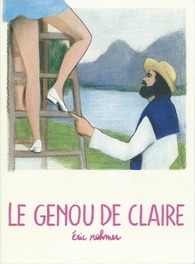Claire’s Knee: Six Moral Tales #5/6 (Le genou de Claire). Éric Rohmer, 1970.
😸
Edition screened: Blu-ray included in Potemkine box set Coffret Éric Rohmer, released 2013. French language with English subtitles. Runtime approximately 106 minutes.
Summary: No depictions of violence or harm to animals.

